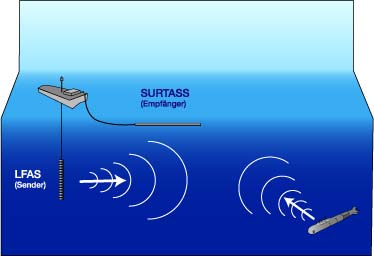
|
|
|
|
|
|
Shark Info (12-20-2002) |
Author |
|
Intro: |
Shark Info |
|
Main article: |
Dr. A. J. Godknecht |
|
Article 1: |
CITES Appendix II to finally include whale sharks and basking sharks |
Shark Info |
Article 2: |
Dr. A. J. Godknecht, Dr. G. D. Guex |
|
Fact Sheet: |
Shark Info |
|
Remote detection sonar threatens the oceansReport by Shark Info
The U.S. Marines and recently NATO have been testing a sonar system which can detect submarines over long distances and which in the future is expected to cover 75% of our oceans. The technology which makes this possible is low frequency active sonar (LFAS) which works at an output sound level of more than 215 decibels. A sound pressure level of 140 decibels, for example from a gunshot, can still be measured at a distance of 380 km away. Such acoustic detonations, even if only brief, are dangerous for living organisms and pose a threat not only to whales and dolphins but also to sharks and bony fish. |
|
|
|
|
|
|||||
